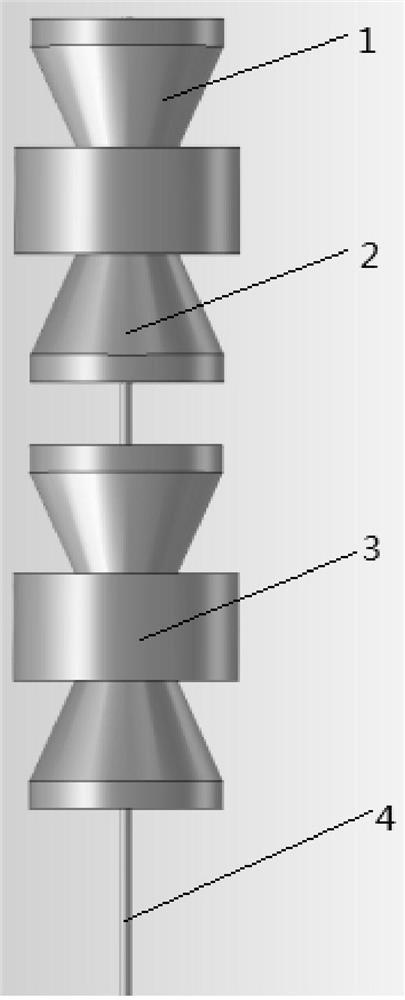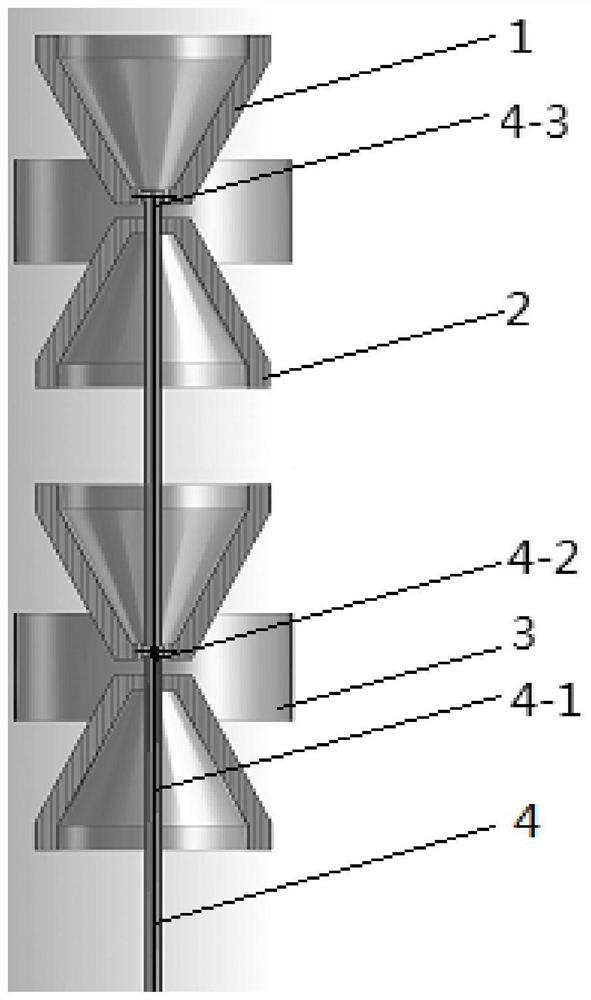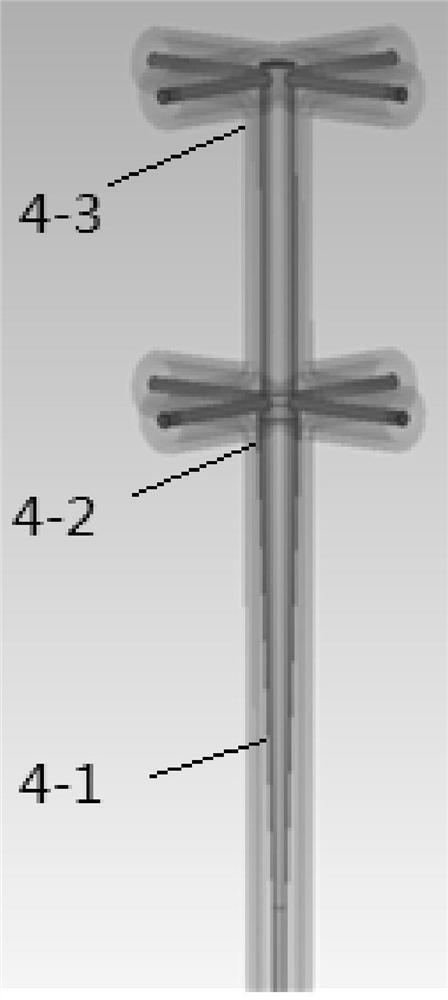Coaxial series-parallel feed omnidirectional biconical dipole sleeve antenna
A dipole antenna and sleeve antenna technology, applied in the fields of communication and radar, can solve the problems of narrowing of the working frequency band, complex feeding structure, affecting the omnidirectional performance of the antenna, etc., and achieves good impedance matching, low transmission loss and structural simple effect
- Summary
- Abstract
- Description
- Claims
- Application Information
AI Technical Summary
Problems solved by technology
Method used
Image
Examples
Embodiment 1
[0027] refer to Figure 4 , the biconical dipole antenna unit, using the gradient structure of the radiator to achieve a better match between the feed port and the free space impedance transformation, the upper and lower radii of the biconical dipole are a, b, and the height h2; The coaxial metal sleeve outside the body further widens the bandwidth of the antenna, and the radius d and height h3 of the sleeve. When the total height is constant, the matching and radiation performance of the antenna are mainly determined by the ratio of the total height of the sleeve antenna to the height h3 of the sleeve. This ratio has an optimal value. Under this optimal ratio, the bandwidth of the antenna is the most width. There is also an optimal ratio between the radius b of the sleeve and the radius a of the inner conductor, and adjusting the value of b can effectively change the impedance bandwidth of the antenna when other parameters are given.
[0028] refer to Figure 5 , the branc...
PUM
 Login to View More
Login to View More Abstract
Description
Claims
Application Information
 Login to View More
Login to View More - R&D
- Intellectual Property
- Life Sciences
- Materials
- Tech Scout
- Unparalleled Data Quality
- Higher Quality Content
- 60% Fewer Hallucinations
Browse by: Latest US Patents, China's latest patents, Technical Efficacy Thesaurus, Application Domain, Technology Topic, Popular Technical Reports.
© 2025 PatSnap. All rights reserved.Legal|Privacy policy|Modern Slavery Act Transparency Statement|Sitemap|About US| Contact US: help@patsnap.com



